AmeriCorps: Watershed Stewards Program Member / Volunteer
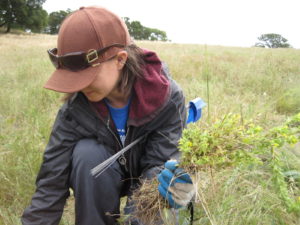
In 2011, I completed a ten-month program with AmeriCorps Watershed Stewards Program. This was my second term as a national volunteer with AmeriCorps and it was a remarkable learning experience.
As a Restoration Technician at Sonoma Ecology Center, I completed my Independent Service Project, or culminating project. I organized and launched the Van Hoosear Weed Wipe Out to remove the invasive parasitic plant Parentucellia viscosa or yellow glandweed.
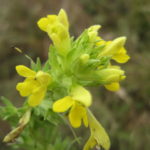
I recruited a crew of volunteers and together we removed 50 lbs, restoring 8,000 sq ft of habitat!
While this workday was the culminating project for my National Service, it was but one element of an immersive service learning program. AmeriCorps is akin to a domestic version of the Peace Corps. Thus we have intensive training from the start, for WSP this included becoming certified in Wilderness First Aid and Swift Water Rescue. Equipped with these certifications, our cohort was then scattered across the state of California to our various placement sites. I was stoked to be placed at Sonoma Ecology Center along with fellow WSP’er Danny.
One major project became the creation of the Nathanson Creek Native Plant Demonstration Garden, below is a gallery of some of the stages of working on this major undertaking. This project was completed with the help of many other AmeriCorps volunteers and massive support from the local community. Other service projects included building a new greenhouse at the Sonoma Garden Park, this tripled the capacity for the native species garden. In this space, I also worked alongside and trained students as EnviroLeaders as well as adult community volunteers. Together we propagated plants, monitored seedlings for pests, collected and cleaned seeds.
Through my experience with AmeriCorps I saw my potential as an educator. As a result of my time with WSP, I found my love for science. This experience put me on the path towards becoming a nature nerd and environmental educator.

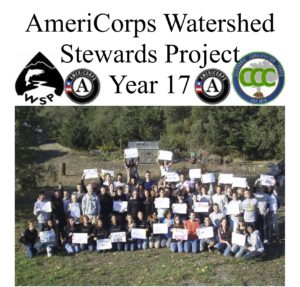

Demonstration Garden
A few days after a massive planting party, the garden looks lush and vibrant. Benches, picnic tables and recycling bins were also installed to help invite guests to linger and enjoy the beauty provided by these native plants.
Larger Image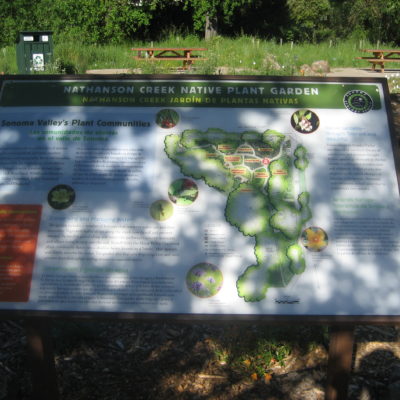
Interpretive Signage
This is one of several interpretive signs installed at the Native Plant Demonstration Garden to help inform visitors about the landscape and the intentional plantings. Each section of the garden represented a different ecosystem. This sign provided information in English, Spanish and Braille; I assisted with the translation into Español.
Larger Image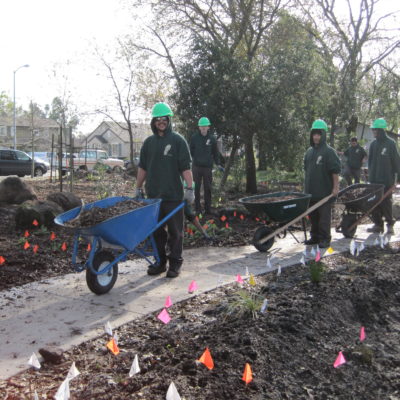
Conservation Corps Members
Some of the valuable crew members that moved mountains of soil and mulch to help prepare the landscape for planting. These wonderful humans worked for Conservation Corps North Bay based in Cotati, California and devoted many hours towards this demonstration garden. This project brought together multiple AmeriCorps crews, all working together towards bringing native biodiversity to this neighborhood garden in Sonoma, California.
Larger Image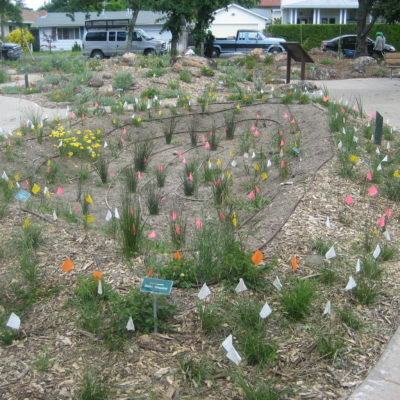
A Planted Swale
The many grasses, rushes and sedges pictured here represent a swale, a depressed section of land where water naturally accumulates. Soil is a fantastic natural filtration system, it can helps to clean the water as it slowly seeps downward towards the groundwater.
Larger Image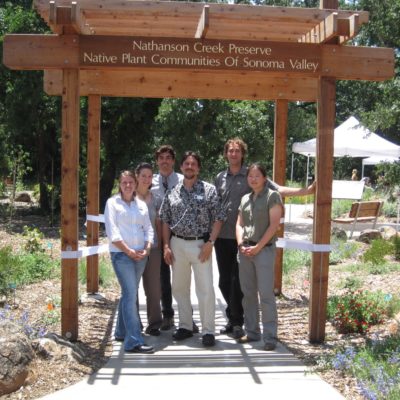
Sonoma Ecology Center Restoration Department
These are the wonderful humans that I got to work alongside for 10 months during my AmeriCorps term with the Watershed Stewards Project. The SEC Restoration Dept also had 2 AmeriCorps members from Conservation Corps North Bay. The crew is pictured here for the ribbon cutting ceremony for newly finished native plant garden in downtown Sonoma. 4 AmeriCorps members + 3 SEC staff leaders + countless hours = huge progress
Larger Image
Power Tools
Using power tools like this auger were an essential component of preparing this demonstration garden. Augers were also used to drill large holes for the trees we planted. The orange circle on the ground marked the location where a pole was soon to be installed for a rain sensor.
Larger Image
Preparing for a Rain Sensor Installation
In drought prone California, using water efficiently is of paramount importance. Thus rain sensors were installed to ensure that the irrigation system would not be active when it was raining.
Larger Image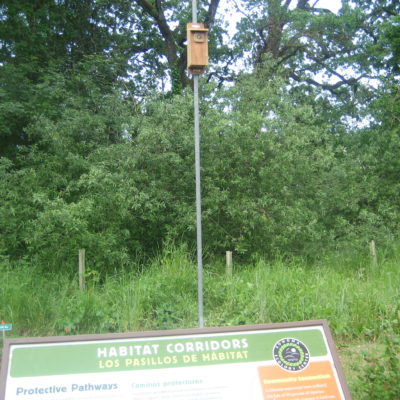
Habitat Corridors
Here is a bird box next to sign about habitat corridors. This demonstration garden borders Nathanson Creek and the lush flora is home to many creatures. This creek also flows past an elementary and high school, making this green space a valuable refuge for local creatures and a learning space for students and the general public.
Larger Image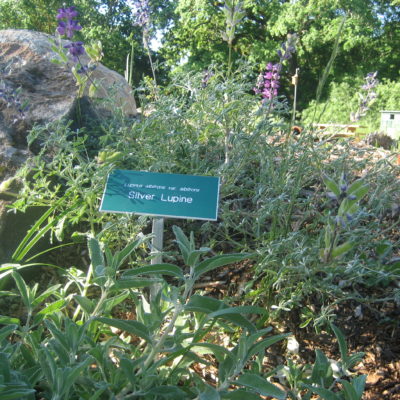
Identification Signage
Each native plant received its own individual sign, informing visitors of its common and scientific name.
Larger Image